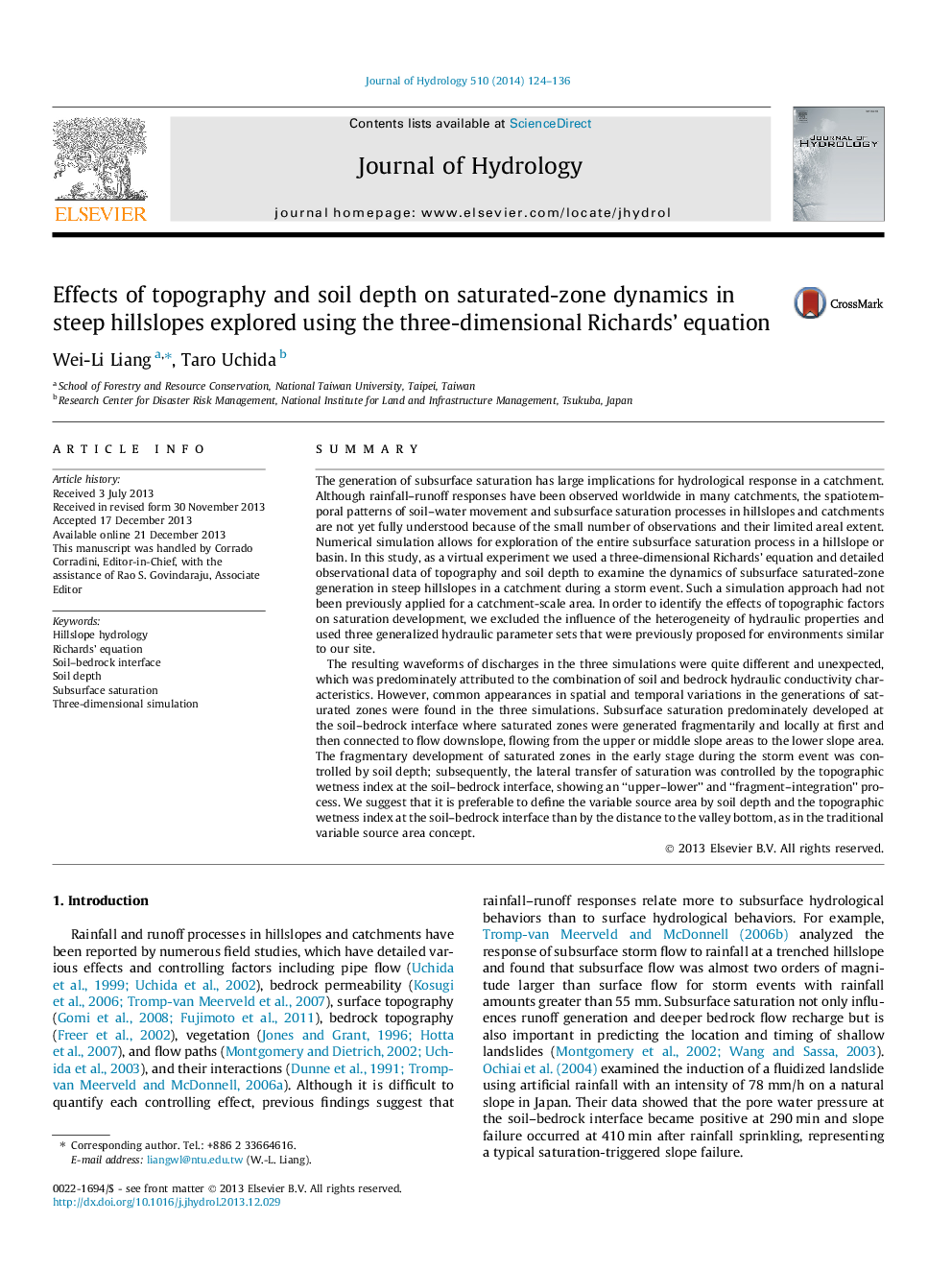| Article ID | Journal | Published Year | Pages | File Type |
|---|---|---|---|---|
| 6413181 | Journal of Hydrology | 2014 | 13 Pages |
SummaryThe generation of subsurface saturation has large implications for hydrological response in a catchment. Although rainfall-runoff responses have been observed worldwide in many catchments, the spatiotemporal patterns of soil-water movement and subsurface saturation processes in hillslopes and catchments are not yet fully understood because of the small number of observations and their limited areal extent. Numerical simulation allows for exploration of the entire subsurface saturation process in a hillslope or basin. In this study, as a virtual experiment we used a three-dimensional Richards' equation and detailed observational data of topography and soil depth to examine the dynamics of subsurface saturated-zone generation in steep hillslopes in a catchment during a storm event. Such a simulation approach had not been previously applied for a catchment-scale area. In order to identify the effects of topographic factors on saturation development, we excluded the influence of the heterogeneity of hydraulic properties and used three generalized hydraulic parameter sets that were previously proposed for environments similar to our site.The resulting waveforms of discharges in the three simulations were quite different and unexpected, which was predominately attributed to the combination of soil and bedrock hydraulic conductivity characteristics. However, common appearances in spatial and temporal variations in the generations of saturated zones were found in the three simulations. Subsurface saturation predominately developed at the soil-bedrock interface where saturated zones were generated fragmentarily and locally at first and then connected to flow downslope, flowing from the upper or middle slope areas to the lower slope area. The fragmentary development of saturated zones in the early stage during the storm event was controlled by soil depth; subsequently, the lateral transfer of saturation was controlled by the topographic wetness index at the soil-bedrock interface, showing an “upper-lower” and “fragment-integration” process. We suggest that it is preferable to define the variable source area by soil depth and the topographic wetness index at the soil-bedrock interface than by the distance to the valley bottom, as in the traditional variable source area concept.
â¢Subsurface saturation develops fragmentarily at the soil-bedrock interface firstly.â¢Soil depth and bedrock topographic wetness index control subsurface saturation.â¢Subsurface saturation shows an “upper-lower” and “fragment-integration” process.
